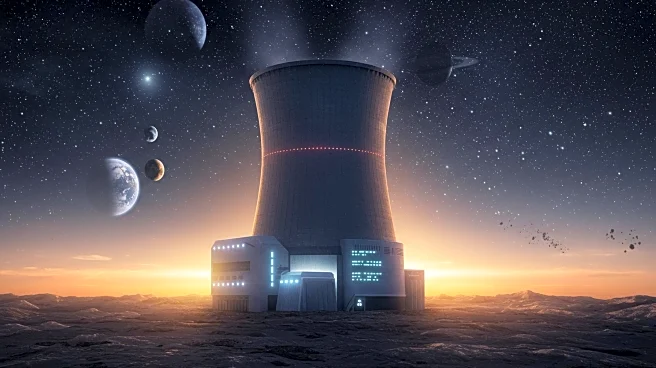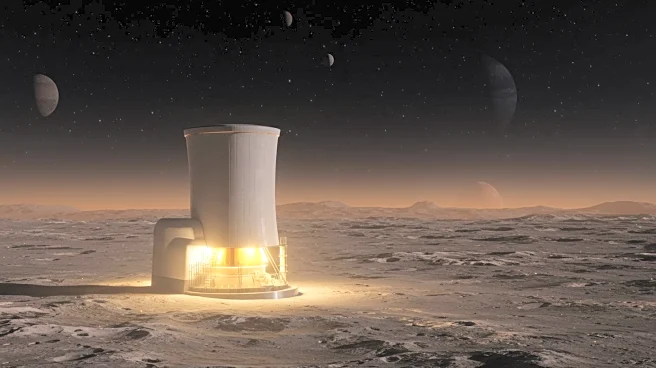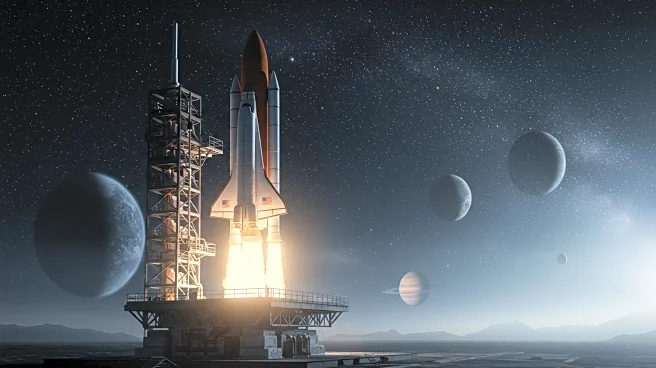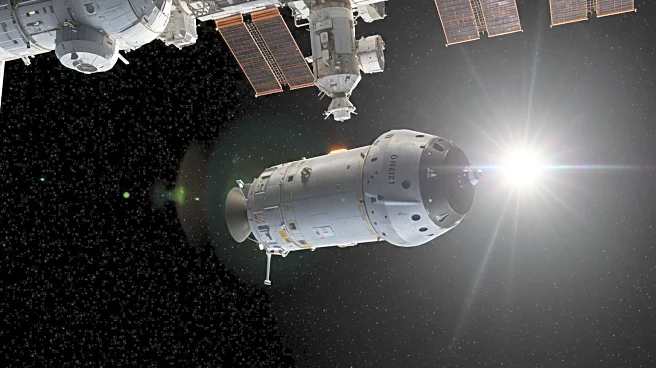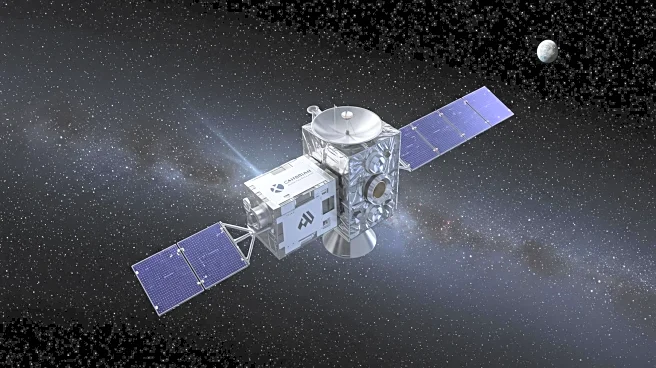What's Happening?
NASA is planning to build a 100-kilowatt microreactor on the Moon within the next five years, as part of its strategy to enhance power capabilities for future lunar and Mars missions. This initiative is driven by the need for reliable energy sources that can support long-term space exploration and industrial activities on the Moon. The project is based on recommendations from experts like Professor Bhavya Lal, who advocate for testing nuclear systems on the Moon before deploying them on Mars. The microreactor would provide substantial power compared to solar energy, which is limited by lunar night cycles and dust storms on Mars.
Why It's Important?
The development of nuclear power systems for space exploration is crucial for establishing a permanent human presence on the Moon and Mars. Nuclear reactors offer a high energy output with minimal mass, making them ideal for space missions where payload efficiency is critical. This advancement could enable continuous operation of scientific instruments, real-time data transmission, and industrial-scale activities on the Moon, paving the way for commercial ventures and further exploration. The project also aligns with the U.S. strategic goals to maintain leadership in space exploration and innovation.
What's Next?
NASA faces several technical challenges, including the development of a suitable microreactor and the logistics of transporting and deploying it on the Moon. Collaboration with the Department of Energy and private companies will be essential to overcome these hurdles. The timeline for the project is contingent on the readiness of SpaceX's Starship and other necessary technologies. Additionally, NASA must address workforce reductions and budget constraints to ensure successful implementation of the project.
Beyond the Headlines
The initiative raises questions about the sustainability and safety of nuclear power in space, as well as the geopolitical implications of establishing energy infrastructure on extraterrestrial bodies. The project could set a precedent for international collaboration or competition in space resource utilization, influencing future policies and treaties.
